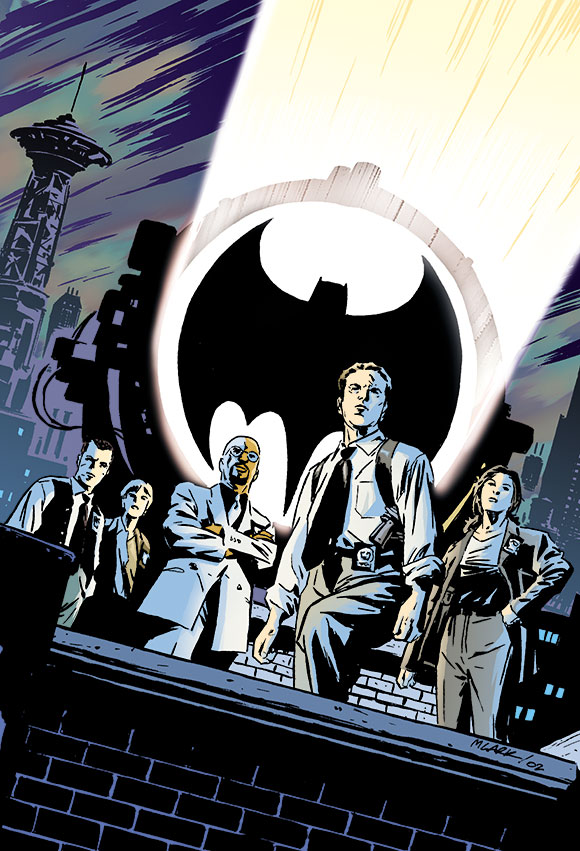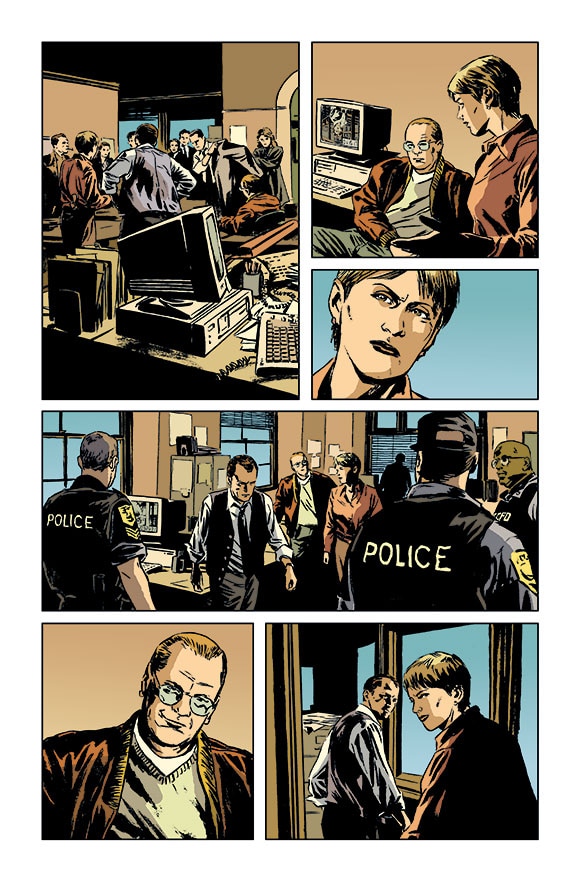Next Monday, the eagerly awaited Gotham will make its debut. A television prequel series set in the city of Gotham right after the murder of Bruce Wayne’s parents, it tells the story of how many of Gotham’s most famous criminals came to power, ultimately requiring a hero like Batman.
Gotham is set well within the Batman universe and will play with much of the same mythology. But with many years to go before the young Bruce Wayne will take up the cowl, the Dark Knight’s story will largely be kept to the periphery. Instead, Gotham focuses on the newly transferred Detective Jim Gordon and his partner, the far less idealistic Harvey Bullock, as well as some of the other officers of the Gotham City Police Department. It’s a unique take for something that most people are viewing as a “Batman show,” and you may be wondering how it’s going to work. If so, you may want to take a look at a DC Comics series from about ten years ago: Gotham Central.

Debuting in December, 2002, Gotham Central tells the story of the men and women of the GCPD from their point of view. Arguably one of DC Comics’ most underappreciated books at the time, Gotham Central ran for 40 issues, was extremely forward thinking in its approach to characterization and has gone on to become a favorite of many readers and creators.
Gotham Central was written by Greg Rucka and Ed Brubaker, who at the time had been endearing themselves to Batman fans with their runs on Detective Comics and Batman, respectively. It was drawn largely by Michael Lark, with other artists including Steve Lieber, Kano and Stefano Gaudiano pitching in. The idea with Gotham Central was to bring elements of police procedurals to comics, while also telling Gotham’s story from a different point of view, looking at what it might be like working to enforce the law in Gotham while there’s a masked super hero in the city doing the same thing and getting most of the credit for it. The series sought to give us a sense of how law enforcement looked at Batman, providing an answer rich in depth that wasn’t at all black and white. It also revealed the ways that Batman would impact the work that the GCPD was doing, often taking evidence or impeding their work in favor of his. Batman’s methods may ultimately serve the greater good, but could you blame the detectives on the case for being angry with him?

Many of the characters in Gotham Central were cops who had already been established in comics—Harvey Bullock, Maggie Sawyer, Crispin Allen, Renee Montoya and Jim Corrigan, to name a few. However, Gotham Central delved far deeper into their lives, motivations and beliefs than any series before, often blazing new ground with the characters. One Eisner and Harvey-winning storyline, Rucka’s “Half a Life,” was unflinching in its portrayal of prejudice after Detective Montoya is outed as a lesbian, while Harvey Bullock’s narrative had him trying desperately, even poignantly, to recover from professional disgrace.
Many storylines in the series were standouts. Besides the aforementioned “Half a Life,” there was also “Soft Targets,” which inserted real world fears into a Joker-on-a-rampage story resulting in one of the most terrifying Joker tales ever written. “Life is Full of Disappointments” experimented by telling the story of a single case through three different points of view over three different issues. “Corrigan” was an unflinching tale of corruption that capped off the series on a note that seemed to suggest Gotham may be too far gone to save from within the system.

Gotham Central shares a focus and many core characters with the upcoming Gotham TV series, but the show’s not an adaptation and the two have some key differences. Gotham takes place before there’s a Dark Knight, while Batman and his rogues are running strong throughout Gotham Central. The comic book also doesn’t shy away from super powers and other more “colorful” aspects of Batman’s world, something we don’t suspect we’ll see too much of on Gotham. However, the biggest difference may be in Gotham’s protagonist. Jim Gordon is relegated to a far more supporting role in Gotham Central, and when he does show up, he’s neither a detective nor the more familiar commissioner—he’s retired. This was due to “Officer Down,” an earlier storyline (also co-written by Brubaker and Rucka) in which he was shot on the job. As a result, the GCPD in Gotham Central and other Bat-books of the era was overseen by Commissioner Michael Akins, a man who is far less trusting of Batman than his predecessor.

Differences aside, fans of both Batman and good, hard boiled police stories will find much to like in Gotham Central, and the book’s relatively brief run makes it easy enough to collect. It’s available in print in four volumes, or between now and September 22, you can take advantage of the DC Digital Comic Store’s currently ongoing Gotham Central Sale, in which all 40 issues of the comic are available digitally for 99 cents each. (The sale also includes other key storylines from the era, including the aforementioned “Officer Down” and the iconic “No Man’s Land.”)
Gotham premieres on FOX on Monday, September 22 at 8 p.m. (9 p.m. CST). If you’re reading this, we suspect you’re going to watch. But hopefully, we’ve given you an idea for something else to read between now and then!















